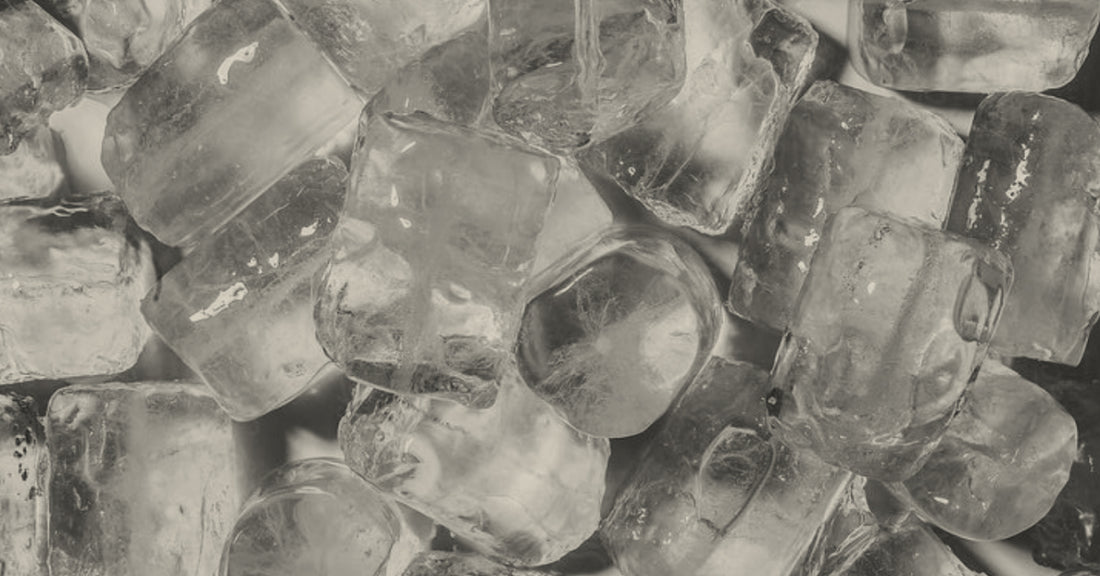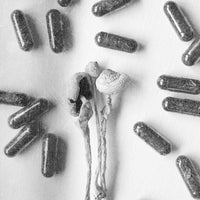What would possess a sane human being to voluntarily jump into an ice-cold shower, bath, lake or plunge tank? Who in their right mind would stay there in the brutal cold, with every muscle and nerve Tweeting all-caps vows of vengeance to their reptilian brain?
To the uninitiated, cold plunging might look like some kind of New Age reboot of the Ice Bucket Challenge, or an endurance test for hardcore fitness buffs eager to prove how “extreme” they are. While there are probably situations where those descriptions do apply, most people who partake of this curious ritual—including many of MUD\WTR’s own team members—do so for improved mood, the relief of pain and inflammation and all kinds of other benefits that have been linked to cold water immersion.
Mud’s VP of Brand, Dersu Rhodes, credits cold plunging with helping restore his mental health during the pandemic. In the darkest days of COVID, he washed away his feelings of numbness and disconnection by swimming in ocean waters of about 56-58°F.
Then, in the thick of winter, he took a plunge in a freezing-cold river in Yellowstone. “I think the air was probably under 10°F, and the river water had to be just over 32,” he reckons. (That, by the way, is the temperature at which water turns to ice.)
“I was a shivering mess when I got out,” he continues, “but the feeling I had as I got back in the van and continued the drive was the most alive I had felt in a week.”
That feeling of invigoration is exactly what keeps many cold plungers coming back for more. Waiting at the end of this butt-clenching trial by water, they say, are the heightened focus and crushing, go-for-it gusto you need to annihilate whatever daily tasks lie ahead. After a few minutes of distress, a sense of endorphin-drunk euphoria kicks in, and a Fourth-of-July explosion of cortisol and adrenaline bestows superhuman levels of energy.
Finding Comfort in the Cold
According to human performance specialist and cold training expert Jesse Coomer, cold water immersion teaches us not to crack under pressure when other stressful conditions arise. “Some people call it stress inoculation, in that you're providing that experience on purpose, and you can remove yourself from the situation if necessary,” he explains.
This kind of deliberate exposure to stressors can be jarring at first. Coomer confesses that during his earliest cold showers, he “felt like a cartoon character, where their skin leaves the skeleton, and it’s trying to get away.” However, much like weightlifting, cold exposure eventually became a routine for him rather than something to be dreaded.
Mud’s head of film, Chris Keener, has done upward of 100 cold plunges, not including the cold showers he regularly takes. “I don't always like it, but I always love it,” he says of the experience. “The key is to consciously choose and welcome the difficulty. I think the body follows the mind in this. Knowing that you're mindfully, willfully choosing the cold, the body can follow suit and relax.”
Chris recommends getting curious about the sensations in your body during cold plunges. “Get super specific in noticing the feelings coursing through you,” he suggests. “This is the best way I know to practice being present.”
The Right Temperature for Cold Plunging
Chris and Jesse have both pulled off cold plunging stunts worthy of a fist bump from the undisputed rock star of the cold exposure world, Wim Hof: Chris celebrated his 40th birthday by cutting a foot-thick block of ice out of a frozen lake in Pennsylvania and immersing himself in the water beneath. And Jesse, who sometimes takes 32-degree ice baths, has been known to plunge into frozen lakes with giant blocks of ice18 inches deep.
Obviously, newcomers to cold exposure should start with more moderate temperatures. According to Jesse, there’s no definitively “safe” temperature for cold plungers, as this will vary from one person to the next. “My best advice is to listen to your body and realize that the colder it is, the less time you're going to want to spend in it,” he offers. “I would rather see a person take a cold shower for 30 seconds to a minute every day than try to go into ice bathing [too quickly].”
He adds that at the lowest temperatures, “once you get past two or three minutes, you really don't see the health benefits,” and that anything colder than about 64°F is going to at least start to induce brown fat activation—which, as neuroscientist Andrew D. Huberman, PhD, explains here, is the key to boosting metabolism through cold exposure.
Cold Plunging and Workouts
While we’re on the subject of wellness, Coomer says taking a cold plunge after a workout can be great for reducing overall wear and tear on the body, especially for high-intensity athletes. However, if you're looking for muscle growth, you might want to wait a little while after your workout before you expose yourself to the cold, just to make sure you’re not blunting the inflammation signal that spurs hypertrophy.
If you’re interested in doing a pre-workout plunge to get a little extra zing, keep it extremely brief—about 10 seconds. Staying in too long can lead to muscle tightening, which reduces mobility.
Know Before You Go
- Always make sure you can instantly get out of the cold. If you wander far from home to a natural setting such as a lake, bring a friend—especially one who has cold plunging experience.
- Always get out while you're still feeling good. If you get to the point where you're really suffering and shivering, you’ve probably stayed in the cold too long.
- If you get into the heat too quickly after being in the cold, you might experience the unpleasant phenomenon of afterdrop, in which your core body temperature continues to decline as you’re rewarming.
- “It's a practice, not a performance,” Jesse offers. “Remember, you're not there to torture yourself; you're just there to challenge yourself in a hopefully fun and healthy way.” Or, as Dersu puts it, “It's not about how cold the water is or how long you can stay submerged. It's about pushing past the resistance and being present with your fear or distress without acting impulsively. Even if you're only in for 20 seconds, if you can find even a moment of calm where you aren't in a triggered, fight-or-flight mode—that's it!”
Damon Orion is a writer, musician, artist and teacher based in Santa Cruz, CA. Read more of his work at damonorion.com.
Images by Jesse Coomer
Read more: How to Cold Plunge on Any Budget
Read more: MUD\WTR’s Cultish Cold-Plunge Culture
Read more: The Weird History of Flotation Therapy



